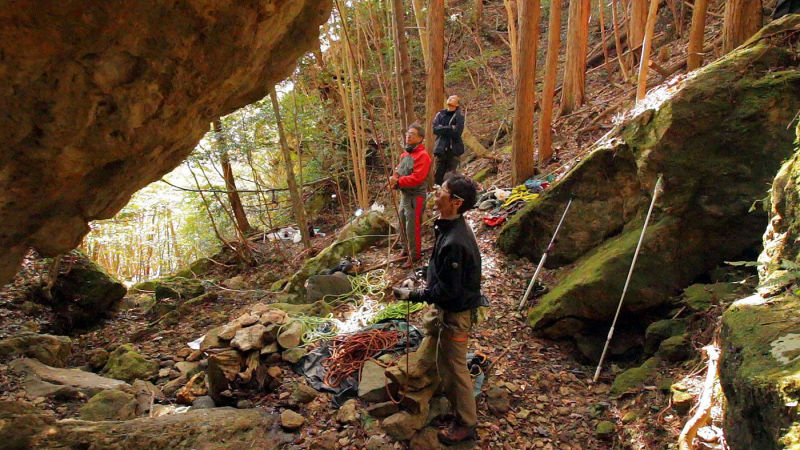
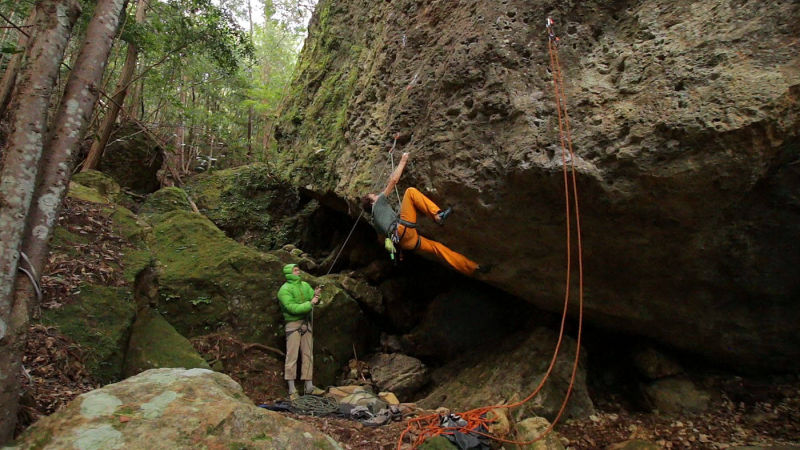
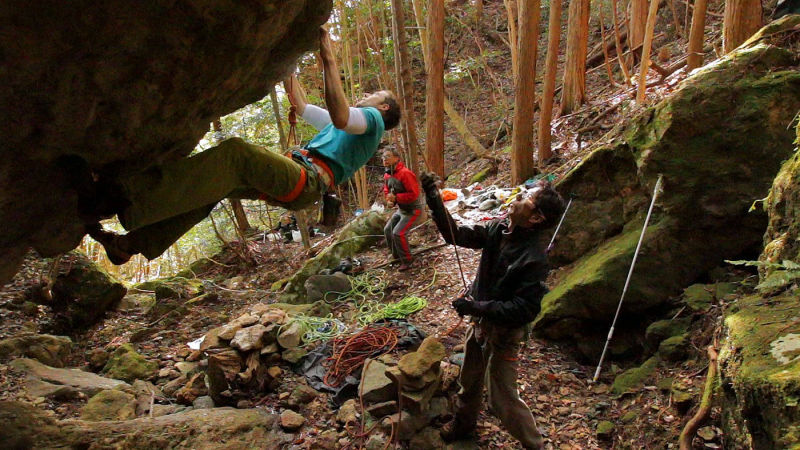
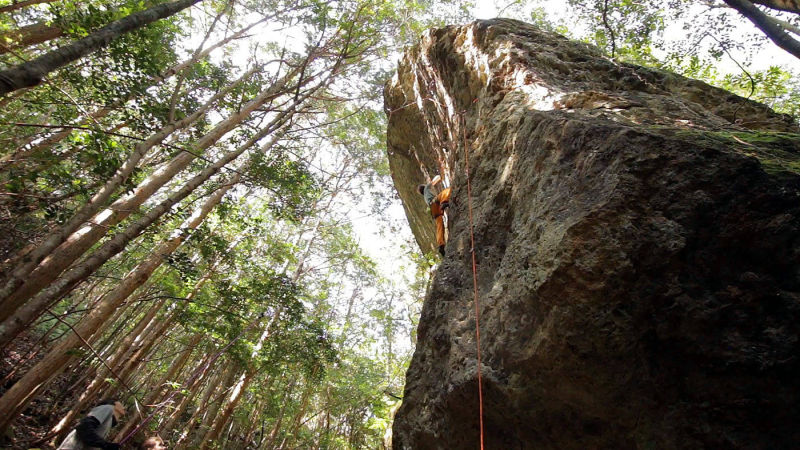
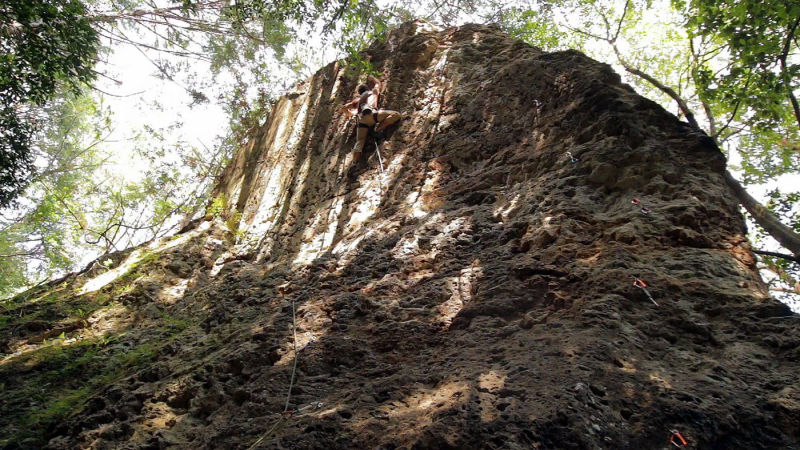
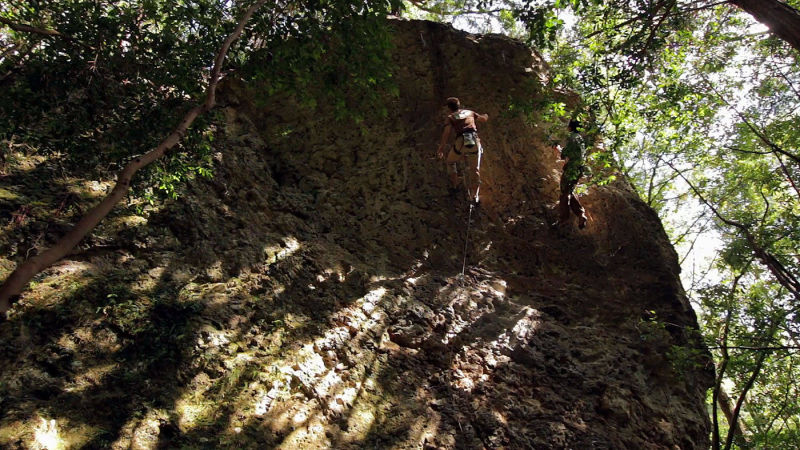
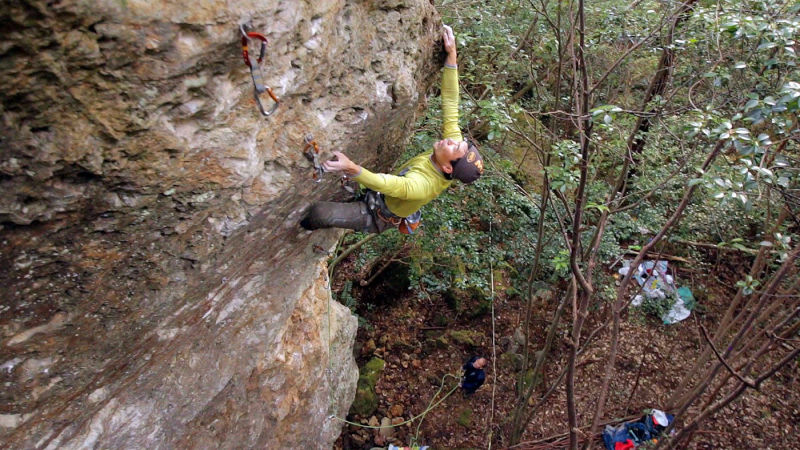
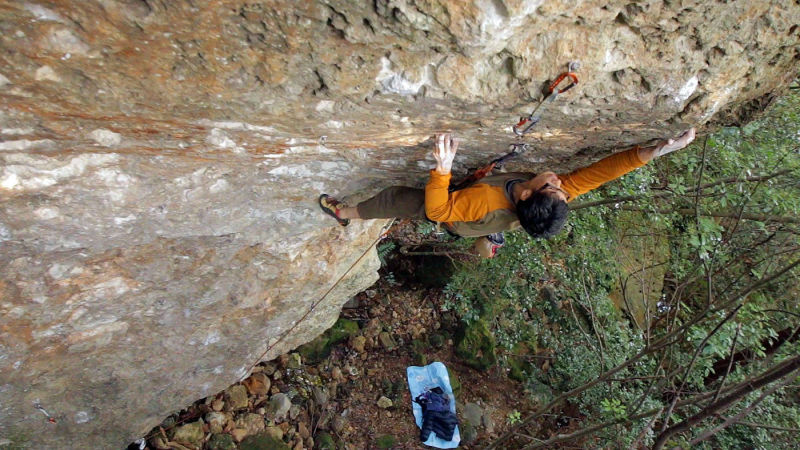
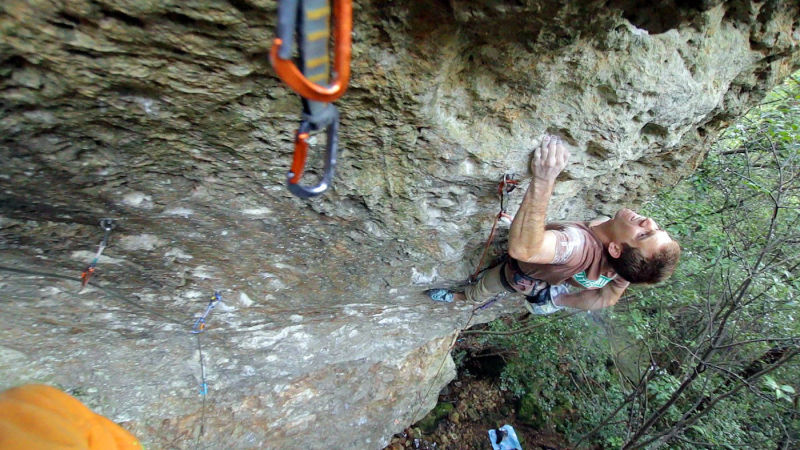
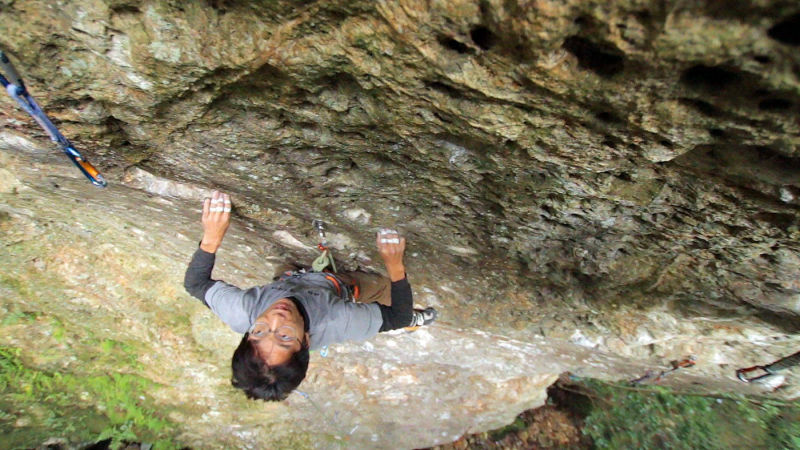
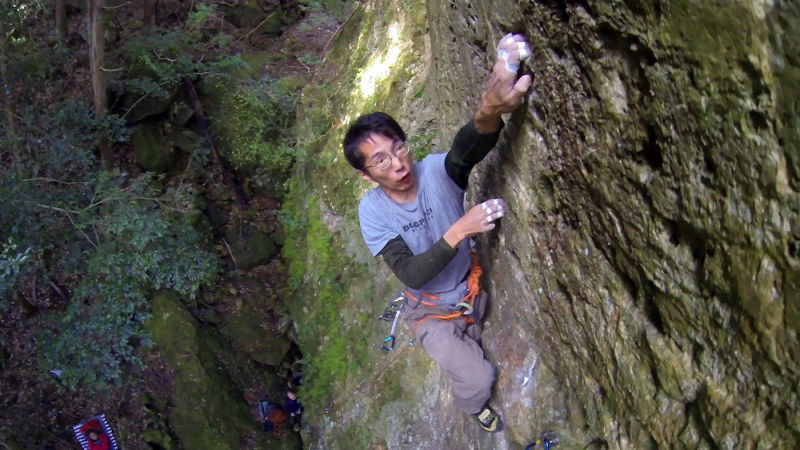
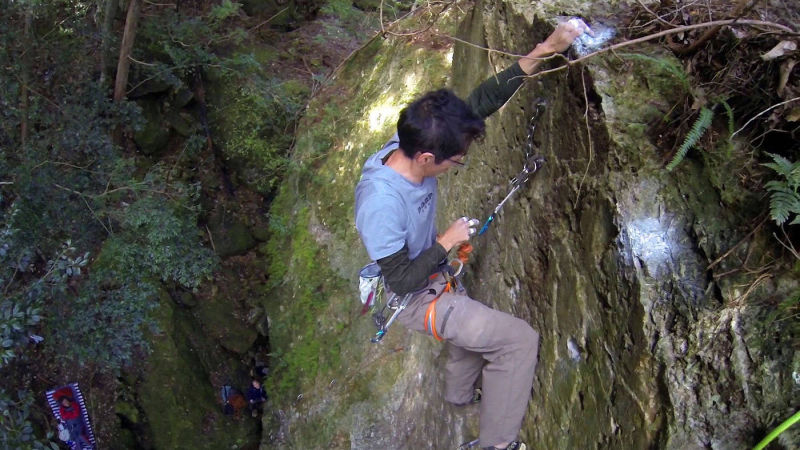
Early April 2014 I went to bolt new routes in Hōrai (鳳来) at a new crag I called Oritatami-iwa (折り畳み岩, which means "the foldable rock"), in reference to its shape. I bolted 4 routes there and you will find in this article all the information to go climbing there.
all year
West. But hidden in the forest
Tuff
4 routes
+ Cool in the summer
+ short approach for Hōrai (about 20 minutes)
+ normaly climbable during and after the rain (the overhang head wall protects from the rain)
+ varied routes (bouldering start, easy intermediate section and overhang for the finale)
- Only 4 routes
- Not really homogeneous routes (bouldering start, easy intermediate section and overhang for the finale), but why do routes have to be homogeneous?
- In the shade in winter
1. 赤とんぼ(Akatonbo), 5.11d, 7 bolts, the crux of the route might be to clip the chains...
3. Blood, Sweat and Tears, 5.12a, 8 bolts, clip the chains from the jug above it
2. 亀の頭(Kame-no-atama = Turtle's head), 5.11d, 7 bolts
4. Farewell, 5.12a, 7 bolts, clip the chains from the jug above it
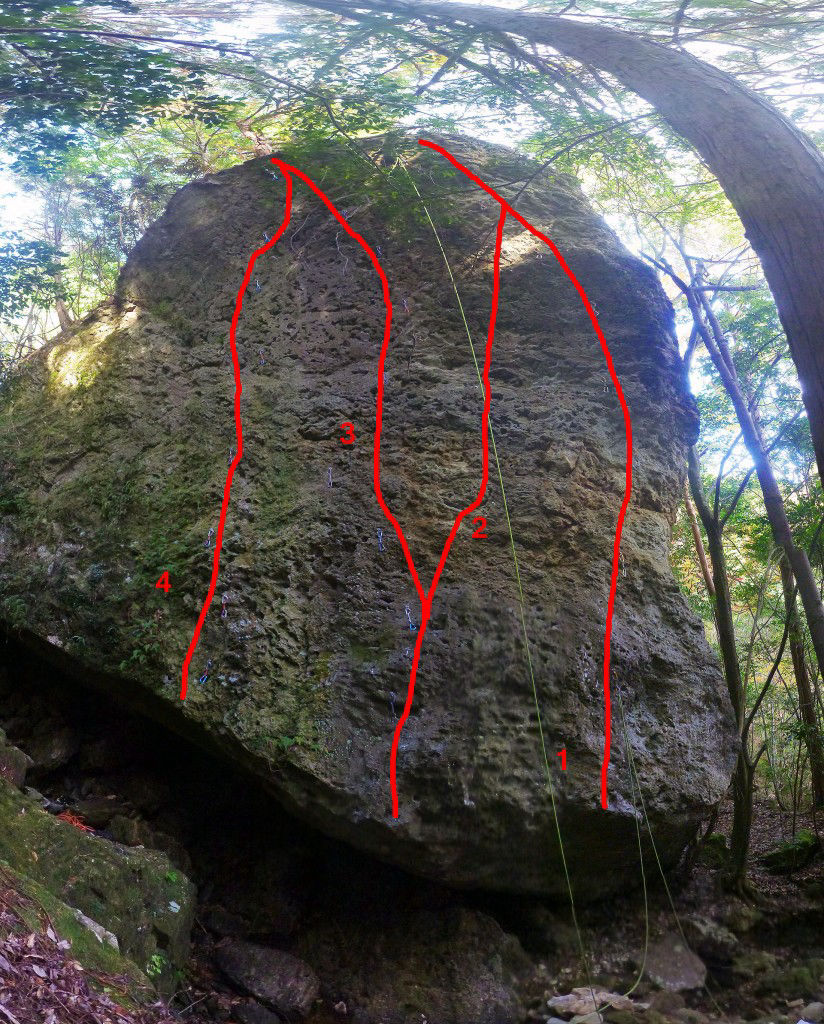
EQUIPEMENT
SECURITY
ACCESS FROM TŌKYŌ
It is possible to go by public transport but car is more convenient and will reduce the approach walk.
The best might be to combine shinkansen from Tōkyō (東京) station up to Toyohashi (豊橋) and rent a car from there. If you go by car from Tōkyō over the week-end you'll loose most of your Sunday in traffic jams on the way back. Depending on the train schedule you might have to change shinkansen at Hamamatsu (浜松) station. In any case it takes about 2:15 (with a Kodama shinkansen) and 1:30 (with a Hikari shinkansen) and costs 8190¥ for non-reserved sit and 8700¥ for reserved sit.
If you really want to take only public transportation, you have to take a local train from Toyohashi on the Iida (飯田線) line up to Mikawakawai (三河川合). The main problem is less the extra 30 minutes of approach walk than the lack of mobility and flexibility to go back to your hotel and back to the crag the next day.
APPROACH WALKS
The approach walk is relatively short for Hōrai. Park at the same parking than to go to Chisansui (治山水) or Paradise (パラダイズロック). Follow the road and at the end of it the trail that leads to Paradise rock. When you arrive on the ridge blocked by trees on the trail, a cairn and tape showing the way up the ridge to Paradise rock, keep following the trail straight. After few meters you will quickly reach a slab (instead of crossing it (it is sketchy), go around it by crossing the forest below it and then back up. Once on the other side of the slab, follow the trail, paint and tape. After few meters, you'll quickly cross two dry river banks and be back on a good trail again. After about 3~5 meters the trail curves left and goes straight up. After about 15 meters, before the trail curve right, look for a small cairn on the left. Go straight left in the forest, cross a dry river bank again and you will be see the rock immediately on your right.
MAPS
ACCOMODATION
It is forbidden to bivouac or camp in the woods or near the crags. There is camping North of the Hōraikō (鳳来湖) lake. You can find on this site some information about the camp site (in Japanese).
There is a pension at the base of the dam of Hōraikō lake (see the map) called Akatanbo (あかとんぼ) often used by climbers
tel : 0536-33-0585
email : info@akatombo.jp
web site : http://www.akatombo.jp/
comments:
- It is a very good deal. The owners are very nice and food is great.
- You can request them rice balls (onigiri) for lunch.
- They also have a cheaper "climber's deal", with a smaller dinner (but still about too much), which save about 1000 yen
There are several hotels, ryōkans, minshuku in the villages and towns when going back to Toyohashi (豊橋), especially near Yuyaonsen (湯谷温泉) or cheaper if you go back to Shinshiro (新城).